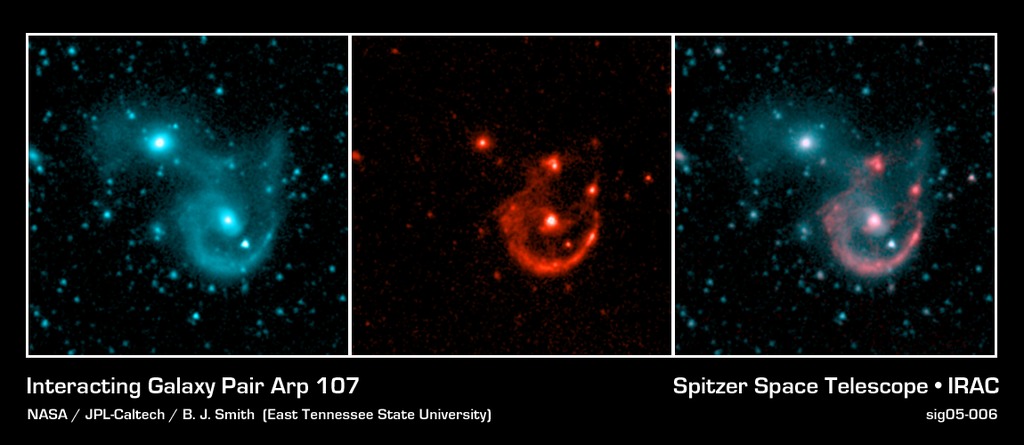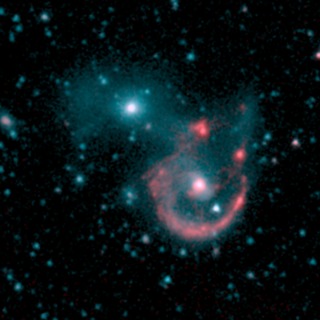
Credit: NASA/JPL-Caltech/B. J. Smith (East Tennesee State University)
Observation • June 9th, 2005 • sig05-006
sig05-006
NASA's Spitzer Space Telescope's sensitive infrared detectors map out faint regions of new star formation in this pair of colliding galaxies known as Arp 107. Like a beautiful pearl necklace, young star clusters have formed along the ring-like tidal arm in this system. Spitzer images at 8 microns (middle picture) provide a clear view of these clumps of young stars. In contrast, in the shorter wavelength 3.6 micron band (left picture), the older stars in the small companion to the northeast and the bridge connecting the two galaxies are bright. The color-coded multi-band picture (right picture; red=8.0 microns, blue=3.6 microns) emphasizes this difference in stellar ages.
North is up and east is to the left on these images. The field of view is 3 arcminutes.
These Spitzer images were presented at the American Astronomical Society meeting in Minneapolis, Minnesota, on May 30, 2005. A journal article with a detailed analysis of these maps was submitted to the Astronomical Journal.
About the Object
- Name
- Arp 107
- Type
- Galaxy > Type > Interacting
- Galaxy > Activity > Starburst
- Galaxy > Grouping > Pair
- Distance
- 450,000,000 Light Years
- Redshift
- 0.033176
Color Mapping
| Band | Wavelength | Telescope |
| Infrared | 3.6 µm | Spitzer IRAC |
| Infrared | 4.5 µm | Spitzer IRAC |
| Infrared | 8.0 µm | Spitzer IRAC |
Astrometrics
- Position (J2000)
- RA =10h 52m 16.8s
- Dec = 30° 3' 42.9"
- Field of View
- 3.5 x 3.5 arcminutes
- Orientation
- North is up





